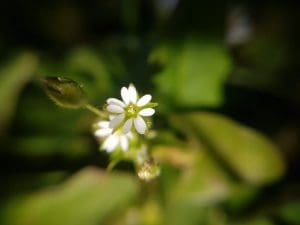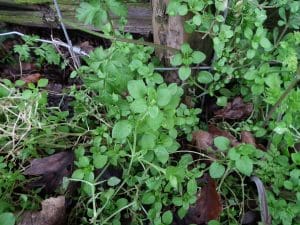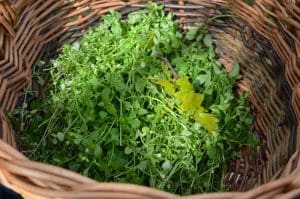Chickweed / Spring / Summer / Autumn / Winter / Edible
How to Identify Chickweed
Common names
Common Chickweed, Chickweed
Botanical name
Stellaria media
Scientific Classification
Kingdom – Plantae
Order –Caryophyllales
Family – Caryophyllaceae
Physical Characteristics for Chickweed
Forms mats of long (6-9 inches) trailing stems that don’t really gain much height.
The roots are quite loosely attached to the soil, so the plant can be easily dislodged with little force.
Leaves
Pairs of leaves are distributed around an inch (2cm) apart along the length of the stem. The leaves are more clustered around the flower heads at the end of the stems.
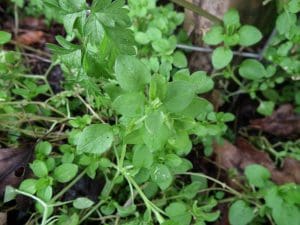
Stems
Between each pair of leaves a fine spine of hair runs along the stem. This spine of hair starts in an alternate point on the section of stem up to the next pair of leaves.
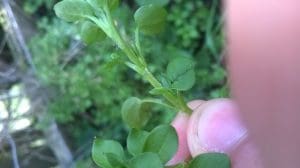
Flowers
The flowers are white and look like stars. They have five petals but deep divisions give the appearance of 10 petals
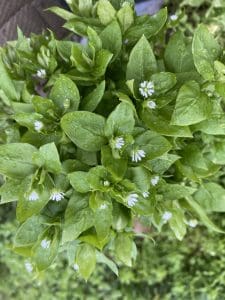
Habitat
Agricultural pasture, gardens, waste ground, flower containers, roadsides and pavement cracks
Known hazards
Contains saponins, which can be poisonous in very large quantities. You would need to consume several kilos before being affected
Could be confused with
Speedwell or Scarlet Pimpernel (Anagallis arvensis), which are both poisonous, before flowering. However, neither has the single spine of hair down the stem that chickweed has – see image below.

Edible use
Eaten raw in salads, or flash steamed.
Notes on Herbal uses
Chickweed has a high iron content so is prescribed by herbalists for people with iron deficiency. It is also used in herbal medicine for skin disorders, respiratory disorders, period pain, and arthritic pain. Please visit your doctor before embarking on any form of treatment
Click here for our guide on making herbal remedies at home
Extra notes from the Foragers
Chickweed is widely considered to be a common garden weed and often removed and composted rather than harvested as a salad green.
The Ainu – indigenous people of Japan and Russia – believed the steeped stems placed on limbs would relieve sore bones
Stellaria means star-like, while media means in-the-middle or in between



